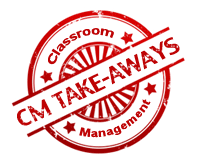
Learning is often defined as the act, process, or experience of gaining knowledge or skill. Psychologists similarly define learning as a change in behavior due to experience. Either way, learning allows a student to modify his or her behavior to suit a situation and to be more successful – academically and behaviorally.
In my seminar, I will provide a very powerful format for you to follow to develop your own lesson plans for rules and procedures. Teaching to rules and procedures will help your students learn all of the skills they will need to be successful in your classroom.
The first month, first week, and first day of school are critical to classroom management. Successful teachers devote a great deal of time during the first few weeks of school to the careful teaching of rules and routines. Instead of telling and posting, they teach and practice crucial classroom routines just as they would academics. The one hundred eighty school days in a year are made up of routines, procedures, and rules to govern relationships.
They set the foundation of a structured environment all children need to learn and all teachers need to teach.
Researchers have long investigated the most common rules and routines addressed by successful teachers at both the elementary and secondary level.
We asked master teachers from around the country to help develop and field test lesson plans for those common rules and routines critical to successful school and classroom functioning. Teaching to expectations is not about trying to form unthinking automatons or youngsters devoid of divergent thought. Quite the opposite. Teaching to rules and procedures will set the stage for structure in your classroom for divergent and creative discovery and learning. Caring can be orderly and structured.
![]()
Classroom Benefits for Administrators
- Every time we look to the office to solve our own discipline problems, we erode our own credibility with our students. I provide strategies that help teachers take care of their own discipline problems in a fair, mutually respectful manner. Empowering teachers frees the office to deal with other important building matters, and promotes clear boundaries of tolerance and promotes proactive, positive learning environments.
- Reduced referrals
- Increased scores
- Because my training is not a “program” but rather a philosophy on how to treat students with dignity and receive the same back, you will find overwhelming staff/student/parent buy-in of the evidence-based strategies I present!

